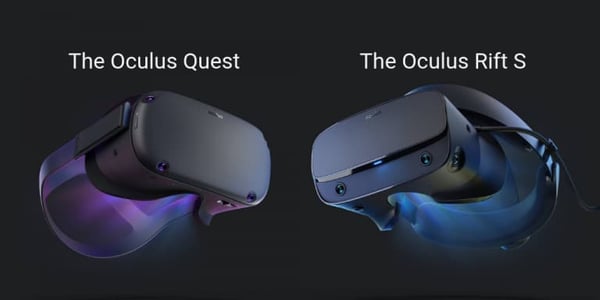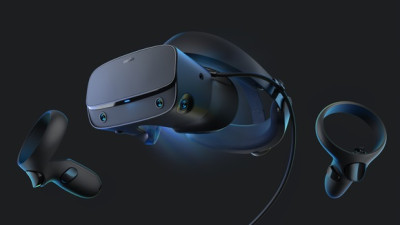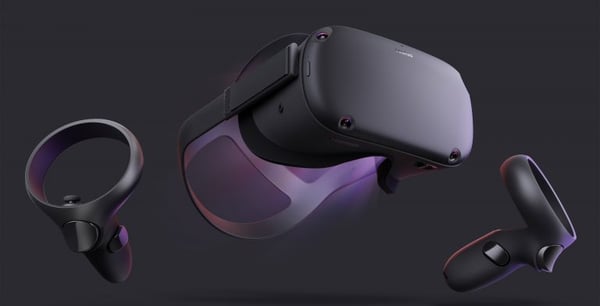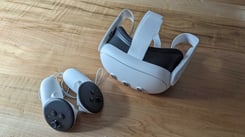Since the day Oculus first made their announcement that they will be releasing not just one but two VR headsets by early 2019, devout VR fanatics have been patiently waiting for the arrival of the exciting hardware. Fast-forward to today, the Oculus Quest and Rift S have been available for pre-orders for about 2 weeks. Best Buy, Amazon, and Oculus have been bombarded with purchase orders for these virtual reality headsets, forcing retailers to host multiple waves of shipments. If you have placed a pre-order right when it went live, you could be one of the lucky individuals that may receive their headset from the first wave of shipments set to be released on May 21st. If you’re still stuck on deciding on which VR headset to purchase, we’ve got you covered.

Understandably, most people when making a purchase automatically look at the price first as a determinant of whether they want the item or not. However, when it comes to deciding between the Rift S and the Quest, you won’t be able to use this tactic. Both VR headsets are priced at $399 USD, making your purchase decision based on both the performance and whether it answers your needs. If this seems overwhelming and daunting to you, not to worry. Let’s take a look at both headsets, their features and capabilities.
Oculus Rift S
The Oculus Rift S is a tethered headset, which means you will have to connect it to a compatible PC to use it. If the name rings a bell, you’re not wrong. The first headset Oculus released was named the “Rift”, and as the name suggests, the new release is cut from a similar cloth. The Rift S is the revamped version of their previous model, with improvements on the resolution and functionality.

Pros
Compared to their previous model, the Rift S is much easier to set up as Oculus has removed the need for external tracking stations. The previous Rift model required pole-like external tracking sensors, which could quickly become tripping hazards. Now, since their sensors are directly built into the headset, the Rift S allows you to freely roam without running the risk of breaking a necessary component of the hardware. Plus, the headset now sports 2560x1440 resolution display, allowing users to experience a virtual world in full HD. Not only is the screen experience enjoyable, but the headset itself is quite comfortable. Oculus has installed a halo strap onto the headset that is adjusted by twisting a knob at the back. This allows users to keep wearing the headset for extended periods of time without giving up comfort.
Cons
One of the biggest downsides to the Rift S is the fact that it is tethered. Even though they have upgraded the system to reduce the number of wires needed to run the headset, the wire itself is a huge limitation. Not only does it mean that the device isn’t portable, but it also means you need the necessary supporting hardware to use it. Not every PC can support the hardware, so investing in a computer compatible with the VR headset can add to the cost. In addition to computer compatibility, the Rift S can only connect to a PC via DisplayPort only -- there is no HDMI port. This either means you need to have a computer that has a DisplayPort or you will need to invest in an additional external converter. Lastly, although the Rift S still has a decent refresh rate of 80HZ, it’s actually lower than the original Oculus Rift running at 90HZ. For those who may not be familiar with refresh rates, it refers to how often a device changes the image on a screen and it’s measured in frames per second (HZ). A traditional TV runs roughly at 60HZ whereas some modern TV’s can run at 120HZ. The difference between the Rift and Rift S is not huge, but it’s another element to keep in mind.
What the Rift S lacks in mobility, it makes up in a sharper and clearer screen experience. We also predict that Oculus will eventually phase out their older Rift model for the Rift S.
Oculus Quest
The Oculus Quest is the relatively more interesting release, incorporating the strong suits of their two previous headsets: the Rift and the Go. Promising to merge the strength of the Rift and the portability of the Go, the Quest is a standalone VR headset that is completely tetherless. The Quest is incredibly powerful for being a standalone headset and answers the many barriers their previous headsets faced.

The Oculus Rift was praised for its HD quality, however the fact that the headset is tethered posed a major barrier to specific audiences. On the other end, the Go was the preferred choice for people who valued ease in taking VR on the go. But to allow this kind of freedom came at a cost of having fair quality and losing the ability to walk through a VR experience.
Now, the Quest is going to change the game.
Pros
The Quest has six degrees-of-freedom with inside-out tracking. In layman’s terms, the Quest allows you to move freely in a virtual world that is strikingly similar to movement in real life. Plus, just like the Rift S, there is no need for external tracking stations as it’s all programmed into the headset itself. This tetherless headset is powerful and portable, allowing you to bring VR with you wherever you go. The beauty of a standalone headset is that unlike the Rift series, you don’t need any external hardware to support the headset. Simply turn on the headset, look in, and be whisked away to a whole new world. In regards to comfort, the newly revamped straps are a cloth-like material with rubber straps, making this headset fit snuggly and comfortably over your head.
The Quest sounds really great, doesn’t it? Well, it does also come with its own set of limitations.
Cons
For one, in comparison to the Rift S, the headset is not as powerful. The Quest will use Qualcomm’s Snapdragon 835 mobile processor, which is a step higher than what Oculus used for the Go. Although it is a powerful processor, it doesn’t beat the Rift S. In addition, be prepared that the Quest will not have the same fidelity as the Rift S. Since the Quest is a standalone headset, it won’t get any external support from a powerful PC like the Rift S. With the GPU limitation, textures in the Quest won’t look as sharp compared to the tethered headsets. The last downfall of the Quest will be its limited storage space. With the Rift S, running out of storage is not a problem at all, however, the Quest at its max has 128GB of memory. This could prove to be a limitation for those who need extra space for their files.
Get Ready for a New Wave of VR Headsets
Both the Oculus Rift S and Quest are equally powerful virtual reality headsets and great options if you’re looking to invest in the hardware. The upgrades that Oculus has made to their latest releases really pushes the boundaries of what we thought could be possible with a piece of VR hardware. At the end of the day, between the two headsets, one is not better than the other. Choose the headset that will be the best fit for you.
Both headsets are still available for purchase, however, they will be shipped at a later date (when we last checked, Oculus listed it will ship by May 30th).
Here at Yulio, we strive for excellence in performance and integrity when it comes to our product, and customer service. To learn more about how VR can enhance your business workflow, sign up for our FREE 5-day email course. Want to stay updated with everything or anything Yulio? Follow us on Facebook, Twitter or Linkedin!


.jpg?width=245&height=150&name=active-adult-beautiful-1799244%20(1).jpg)



